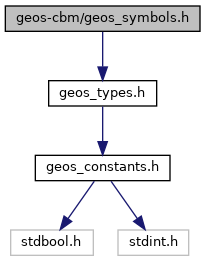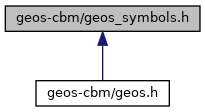Go to the source code of this file.
◆ alarmSetFlag
◆ alarmTmtVector
vector for when character is written over right margin
◆ alphaFlag
speed at which menu items and icons are flashed
◆ appMain
current size (in blocks) of file. This is pulled in from & written to directory entry The following variables are saved by GEOS during dialog boxes and desk accessories
◆ bakclr
◆ baselineOffset
◆ bkvec
free for use by application
◆ bootName
Addresses of pointers to sprite object graphics
◆ BRKVector
address of a service routine for the alarm clock time-out (ringing, graphic, etc.) that the App. can use if necessary. Normally 0.
◆ cardDataPntr
Size of each card in bytes
◆ clkreg
◆ CPU_DATA
| volatile uint8_t CPU_DATA |
|
extern |
◆ CPU_DDR
◆ curDevice
◆ curDirHead
block used to hold file head block for a GEOS file.
◆ curDrive
Disk that current printer driver resides on disk name plus terminator byte
◆ curHeight
◆ curIndexTable
◆ curPattern
The following variables are saved by GEOS during dialog boxes and desk accessories
◆ curRecord
Turbo stat flages for drives 8,9,10, and 11 Variables kept current for a specific opened file of structure type VLIR
◆ currentMode
Pointer to the actual card graphics data
◆ curSetWidth
Offset from top line to baseline in character set
◆ curType
This flag is changed from 0 to 0xff after deskTop comes up for the first time after booting
◆ dataDiskName
Name of data file (passed to application)
◆ dataFileName
Disk name of disk in drive B 18 char disk name (padded with 0xa0)
◆ dateCopy
copy of sysRAMFlg saved here when going to BASIC
◆ day
◆ dblClickCount
when going into menus, save user active font table here
◆ dir2Head
Disk name of disk in drive D 18 char disk name (padded with 0xa0)
◆ dirEntryBuf
buffer used to hold track and sector chain for a file of maximum size 32258 bytes
◆ diskBlkBuf
location of kernal vectors Start of GEOS system RAM
◆ diskOpenFlg
currently active disk drive (8, 9, 10 or 11)
◆ dispBufferOn
Current underline, italc and reverse flags
◆ dlgBoxRamBuf
◆ DrACurDkNm
buffer user to build a directory entry
◆ DrBCurDkNm
Disk name of disk in drive A 18 char disk name (padded with 0xa0)
◆ DrCCurDkNm
Holds name of current input device
◆ DrDCurDkNm
Disk name of disk in drive C 18 char disk name (padded with 0xa0)
◆ driveData
Holds current color mode for C128 color rtns
◆ driveType
of drives running on the system
◆ extclr
object to background collision register
◆ faultData
indicates how to flash icons when selected
◆ fileHeader
general disk block buffer
◆ fileSize
flag indicating if file has been written to since last update of index Tab & BAM
◆ fileTrScTab
block contains directory header information for disk in currently selected drive.
◆ fileWritten
number of records in open file
◆ firstBoot
◆ graphMode
address to return from in-line call
◆ grcntrl1
◆ grcntrl2
moving object enable bits
◆ grirq
graphics memory pointer VM13-VM10|CB13-CB11
◆ grirqen
graphics chip interrupt register
◆ grmemptr
◆ hour
◆ iconSelFlg
flag for alphanumeric input
◆ inputData
This is where mouse service routines should look
◆ inputDevName
RAM bank for each disk drive to use if drive type is RAM disk or Shadowed Drive.
◆ inputVector
routine to call on key press
◆ intBotVector
Called at the top of OS interrupt code to allow application programs to have interrupt level routines
◆ interleave
indicates if current disk is a GEOS disk
◆ intTopVector
Applications main loop code. Allows apps to include their own main loop at the end of OS main loop
◆ IRQ_VECTOR
◆ isGEOS
indicates if a disk is currently open
◆ kernalVectors
◆ keyData
◆ keyreg
◆ keyVector
routine to call on mouse press
◆ leftMargin
bottom line of window for text clipping
◆ lpxpos
◆ lpypos
◆ maxMouseSpeed
ram array for mouse picture data
◆ mcmclr0
◆ menuNumber
Bit flags for mouse faults
◆ minMouseSpeed
◆ minutes
◆ mobbakcol
object to object collision register
◆ mobclr
◆ mobenble
◆ mobmcm
moving object to background priority
◆ mobmobcol
◆ mobpos
◆ mobprior
graphics chip interrupt enable register
◆ mobx2
moving object multi-color mode select
◆ moby2
graphics control register #2
◆ month
◆ mouseAccel
◆ mouseBottom
top most position for mouse
◆ mouseData
This is where key service routines should look
◆ mouseFaultVec
routine to call on device change
◆ mouseLeft
bottom most position for mouse
◆ mouseOn
bit 7 controls writes to FG screen bit 6 controls writes to background screen
◆ mousePicData
Y position for string input End of variables saved during DB's and DA's
◆ mouseRight
left most position for mouse
◆ mouseSpeed
This is where input drivers pass device specific info to applications that want it
◆ mouseTop
of currently working menu
◆ mouseVector
Called at the bottom of OS interrupt code
◆ mouseXPos
Flag indicating that a new key has been pressed
◆ mouseYPos
◆ msbxpos
◆ msePicPtr
flag indicating that the mouse mode is on
◆ nationality
◆ NMI_VECTOR
◆ nmivec
◆ numDrives
BlkAlloc uses the value here as the desired interleave when selecting free blocks
◆ objPointer
Addresses of specific sprite picture data
◆ otherPressVec
routine to call when mouse goes outside region or off a menu
◆ pressFlag
rightmost point for writing characters. When crossed, call mode through StringFaultVector End of variables saved during DB's and DA's
◆ PrntDiskName
Name of current printer driver 16 byte filename, 1 byte terminator
◆ PrntFilename
Disk that data file is on
◆ ramBase
Current disk type (copied from diskType)
◆ ramExpSize
1 byte each reserved for disk drives about each device (each driver may use differently)
◆ random
◆ rasreg
graphics control register #1
◆ RecoverVector
routine called when BRK encountered
◆ RESET_VECTOR
◆ returnAddress
◆ rightMargin
leftmost point for writing characters. CR will return to this point
◆ savedmoby2
buffer to hold variables while DB or DA is running (to 0x8697) Second global memory area
◆ saveFontTab
random number, incremented each interrupt
◆ scr80colors
Copy of reg 24 in VDC for C128
◆ scr80polar
Saved value of moby2 for context saving done in dlg boxes & desk accessories. Left out of original GEOS save code, put here so we don't screw up desk accessories, etc. that know the size of TOT_SRAM_SAVED above
◆ screencolors
used internally to indicate which command caused a return to the application (in dialog boxes). Actual data is returned in r0L.
◆ seconds
◆ selectionFlash
routine called to recover background behind menus and dialog boxes
◆ sprpic
2nd directory header block, for larger disk capacity drives (such as 1571)
◆ STATUS
◆ string
pointer to current pattern
◆ StringFaultVec
routine to call on mouse press that is not a menu or an icon
◆ stringX
right most position for mouse Global variables for string input and prompt manipulation
◆ stringY
X position for string input
◆ sysDBData
TRUE if the alarm is set for geos to monitor dialog box variables
◆ sysFlgCopy
◆ sysRAMFlg
◆ TURBO_DD00
◆ TURBO_DD00_CPY
◆ turboFlags
Disk Drive types: 1 byte drive type for each of drives 8,9,10,11
◆ usedRecords
◆ vdcClrMode
Screen colors for 80 column mode on C128. Copy of reg 24 in VDC for C128.
◆ version
start of "GEOS BOOT" string
◆ windowBottom
top line of window for text clipping
◆ windowTop
pointer to mouse graphic data
◆ year
used to determine double clicks on icons
◆ zpage
zero page variable definitions:

